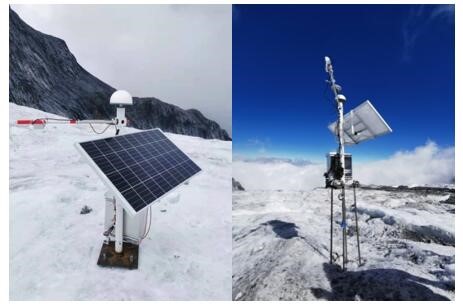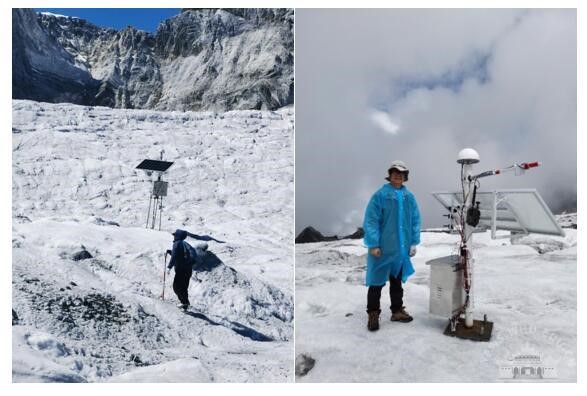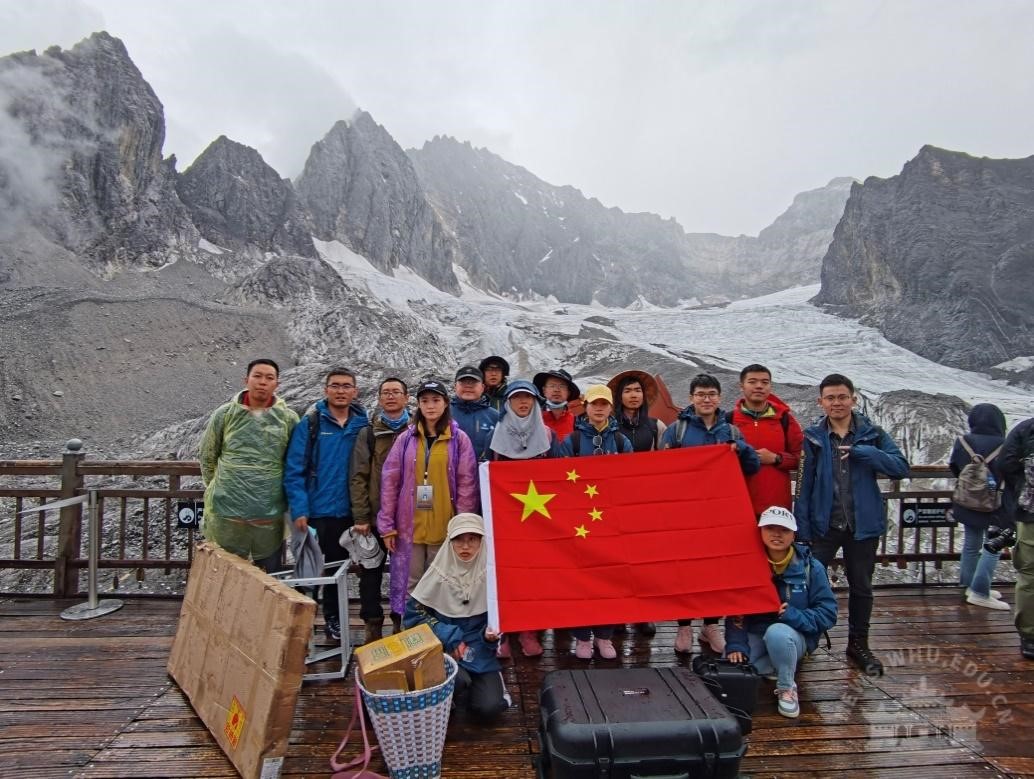China’s first real-time glacier monitoring system has been developed by Wuhan University China Antarctic Center of Surveying and Mapping and Yulong Snow Mountain Cryosphere and Sustainable Development Field Observation and Research Station of Northwest Institute of Ecological Environment and Resources of the Chinese Academy of Sciences (hereinafter Yulong Snow Mountain Station). The system can greatly reduce the intensity and potential risks of artificial monitoring of high-altitude glaciers, and improve the continuity, accuracy, timeliness and online visualization of data collection.
The research team includes Yang Yuande and Ai Songtao from The China Antarctic Surveying and Mapping Research Center of Wuhan University and Wang Shijin from the Yulong Snow Mountain Station. The system is composed of GNSS, laser ranging, camera, weather, ice temperature, seismometer and other monitoring modules. The observation data is transmitted in real-time through 4G, and published online through the network, which can be accessed online through browsers and mobile phones at any time.
In July 2021, the China Antarctic Surveying and Mapping Research Center of Wuhan University assembled Glacier No.1 Baishui River, Yulong Snow Mountain. Through system debugging, the real-time monitoring system of glacier movement was developed for the first time and successfully obtained the real-time information of glacier movement. In October, a joint research and development team from Wuhan University and Yulong Snow Mountain Station upgraded the system, adding meteorological parameters such as temperature, humidity and pressure, as well as real-time video modules. Currently, monitoring data is updated online every five minutes.

Yulong Snow Mountain real-time glacier monitoring system (left: July 23; Right: Oct. 22)
The monitoring results show that the distance from the ranging sensor of the system to the ice surface increased from 1.345 meters on July 23rd to 2.51 meters on August 29th. Over a one-month period, the glacier lost 1.25 meters, a state of intense ablation. Surveillance camera photos show the first snow falling on Yulong Snow Mountain on the morning of September 13th. According to meteorological return records, since October 20th, the humidity of the ice surface has been over 90%, with minimal solar radiation. The video recorded multiple snowfalls during the same period. Laser ranging shows that the distance between the ranging sensor and the ice surface reduced from 2.415 meters at 3:00 in the morning on October 20th to 2.30 meters at 0:00 on October 22nd. After the first snow in winter, with nearly 12 cm snowfall in two days, and the glacier began to accumulate.




Real-time monitoring data and its visualization

Real-time monitoring of site conditions
The system is designed to verify long-term observation techniques and methods of glaciers and the environment in Yulong Snow Mountain. If validated, it can equip more sensors to obtain multi-factor observation data of glaciers. At the same time, GNSS real-time monitoring of ice velocity data can be used to identify the status of glacier movement and potential glacial surging phenomenon. The system is compatible with a variety of sensors and integrates data acquisition, transmission, analysis, storage and release. It features high real-time performance, independent controllable software as well as customizable and expandible hardware. It has laid a solid foundation for real-time monitoring and refinement research of typical glaciers for the "one station and four districts " (one station is Yulong Snow Mountain station and the four districts are namely Gangri Gabu, Meili Snow Mountain, Gongga Snow Mountain and Dagu Snow Mountain).

Group photo of field workers
Rewritten by: Liang Keke
Edited by: Zhang Ruoxi